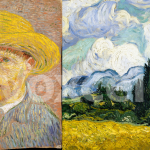Below are the sample questions and answers for IELTS Speaking Part 1 Introduction: ‘Public Transport’. Each answer by Voxcel is written on Band 9 parameters. Click here to read how to structure your answers in your IELTS speaking test.
Each Topic of Part 1 covers questions of different types, including different tenses, to help you practice in the best way possible.
IELTS SPEAKING TOPICS PART 1 – PUBLIC TRANSPORT
- Do you often use public transport? Why or why not?
Answer: Yes, I use public transport regularly because it’s cost-effective, reduces traffic congestion and eco-friendly, so it aligns with my values. Plus, I can relax, listen to my favourite music or read during my commute instead of focusing on driving.
- What type of public transport do you prefer—bus, train, subway, etc.? Why?
Answer: I prefer trains because they’re faster than buses and less prone to delays caused by traffic on the road. Subways are convenient too, especially in cities, but trains offer scenic views and smoother rides. All in all, efficiency and comfort matter most to me.
- Have you ever had a bad experience using public transport? What happened?
Answer:Unfortunately, yes. Once, I missed the last bus home after work and had to wait an hour for the next one. It was frustrating because I was already starving and tiring as there was no place to sit. From then, I learned to check schedules beforehand,it taught me to plan ahead.
- Would you say public transport is better than driving a car? Why?
Answer: In many ways, yes! Public transport is cheaper, reduces carbon emissions, and eliminates parking hassles. However, cars offer not only flexibility like you can stop anytime, anywhere you want but also privacy, which you cannot expect in public transportation system. Ultimately, it depends on priorities—both have their pros and cons.
- Can you recall a memorable journey on public transport? Why was it special?
Answer: During a trip abroad, I took a scenic train ride through mountains and valleys. The breathtaking views made the journey unforgettable. It was one of those moments where travel itself became the highlight—it felt magical.
- Do you think public transport is affordable for everyone? Why?
Answer: While generally affordable, fares can still be burdensome for low-income individuals, sodiscounts or subsidies help.But then there is time component involved as well. In some regions, accessibility and long wait times make it unreliable and costly in terms of time because people may lose job opportunities if they don’t reach their destination on time.
- Are there any disadvantages to relying on public transport? Why?
Answer: One downside is limited routes or infrequent services in certain areas. Delays or overcrowding can also test patience. To put it simply, convenience isn’t always guaranteed and you may have to bear with some uncivilized passengers.
- How does public transport impact the environment?
Answer: Public transport significantly lowers greenhouse gas emissions by reducing the number of private vehicles on roads. Shared rides minimize fuel consumption and pollution. For instance, switching to buses or trains contributes to cleaner air and sustainable living.
- Do you think technology has improved public transport systems? Why?
Answer: Absolutely! Real-time tracking apps, contactless payments, and automated announcements enhance user experience. Innovations like electric buses or driverless trains push boundaries further. However, implementation must be seamless to avoid disruptions because, with technology, there is always a potential for hiccups.
- Are there any improvements you’d like to see in public transport? What are they?
Answer: I’d love to see more frequent services, cleaner facilities, and dedicated bike racks for commuters. Expanding networks to underserved areas would also boost accessibility. To sum it up, small upgrades can make a big difference.
- Do you think public transport encourages social interaction? Why?
Answer: Yes, shared spaces naturally foster conversations or connections among strangers. Whether it’s chatting with fellow passengers or observing diverse cultures, public transport brings people together Like, I’ve made many acquaintances while travelling.
- If you could redesign public transport in your city, what changes would you make?
Answer: I’d introduce solar-powered vehicles, increase frequency during peak hours, and create comfortable seating arrangements. Adding Wi-Fi and charging ports would cater to modern needs. I think, integrating green initiatives would set a benchmark as it’d be visionary yet practical.
Note: We have written questions and answers for all the IELTS Speaking Topics of Part 1. Click here to assess them. We aim to help the students as much as possible. We have also written IELTS Speaking Cue Cards, including their Part -3 on the scale of Band 9. However, we don’t promote cramming.
All the content on the Voxcel website is solely copyrighted and owned by us. If anyone copies and is found to be stealing, we reserve the right to take a copyright strike or necessary legal action. Feel free to browse our website for sample questions and answers.




